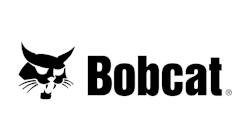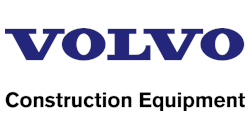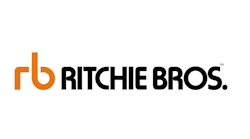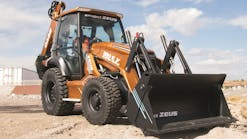Searching for underground utilities has been transformed from educated guesswork, to space-age perfection in the last few decades. But the fact that anything exists underground in the first place offers an interesting backstory.
Our sub-surface infrastructure—truly a world of its own—is the result of a cascade of innovations that began when the first cut-and-cover tunnels were built by the Pharaohs thousands of years ago. When tunnel shields and support systems were perfected in the 1800s, underground services like subways, water storage, sewer, conveyance, and utilities leaped forward once again. And with 21st century horizontal drilling mechanization, today it is no longer necessary to routinely disrupt the aboveground life for a simple repair.
A snapshot of a typical urban subterranean environment reveals a complex network of communications, gas, electric, and water/sewer services ranging with install origins of the early 20th century, to last month’s communication upgrades.
But while the city above ground is supported by the vast underground network of services, it’s a challenge to the crews charged with daily maintenance, repair, and upgrades. And the last thing municipalities and contractors want is to spend an excessive amount of time locating their respective source for these projects.
At the same time, there’s no such thing as being too careful in underground detection prior to excavation. Operators of locating tools must eliminate the potential for damaging another (undetected) service amidst the snarl of pipes, lines, and cabling of belowground infrastructure. Engineers and facilities managers all agree it can be a dicey operation that can’t be rushed.
Getting the “Full Picture”
Spokesperson Eric Huber from RIDGID’s division of Handheld Diagnostics & Underground Locating (the same company as familiar power tools) says they have been in the electromagnetic locating arena now for 15 years, and what they have brought to the field, literally, “is the unique omnidirectional capability for electromagnetic locating.”
“This is the key word—omnidirectional—which means that the detecting antennas are wrapped around a sphere, rather than a stick, allowing the operator to have a 360-degree view of the underground.”
The InfraMarker system saves locating time and improves the cumbersome process of getting data from the field to the office and back.
“Prior to this innovation, you had to locate a utility perpendicular to a line and swing [your machine] back and forth to find the path. With omnidirectional, you can approach the line from any direction. The receiver interprets the information and displays the line location, signal strength, and depth on the screen. It’s very user friendly,” reports Huber.
He says that a lot of companies want to cover their liability, “especially when it comes to knowing exactly where gas lines are—these are not something you want to encounter accidentally.” Even with tracer wires in the newer flexible gas lines, you can make a mistake, he says.
“During horizontal drilling for new gas service, for example, excavators aren’t actually seeing where they are going, and without a camera or a perfectly plotted aboveground mapping, we hear about explosions happening when someone unknowingly places a gas line through a sewer line creating a cross bore. When the sewer line gets clogged, drain cleaning can be a recipe for disaster.”
Using a combination of RIDGID technology such as the CrossChek solution, which Huber says uses cameras and hardware in tandem with the SR-24 omnidirectional detecting, saves searching time for construction professionals and utility workers. But, he adds, it also averts accidents by pinpointing “exactly where to dig.”
“Our omnidirectional antenna has now been integrated with new mobile apps including GPS. This allows you to put “digital” paint on an overhead satellite and save a map for future reference. That way, when you return or need to identify the utility location you can pull up the map and know exactly where to start—you have a permanent record.”
Huber adds that these maps can be saved on your phone or computer, and after the spray paint and utility flags are long gone, a facilities manager for example, will have an accurate reference source. “This digital information is perfect for college campuses, corporate sites, and, of course, municipalities,” he says. “The mobile app can be integrated with geographic information systems [GIS], so that you can add data and create a layered visual that has multiple data sets in it. This gives a very useful and very complete picture of what’s underground.”
To keep all the utility identification consistent, he says the SR-24, when used with the RIDGIDtrax mobile app, uses the conventional color codes set forth by the American Public Works Association (APWA) for each utility. “These are easily marked on the map for you with the appropriate color, so you know exactly what you are seeing—water, gas, communications, and so forth.”
While sitting in traffic you may have glanced down and wondered just what the mosaic of colors that mark the streets in their array secret hieroglyphic symbols, actually signify. To decipher, here is the color code short list from the APWA, Universal Color Coding for underground utilities.
- Red is for electric power lines, conduit, and lighting cables.
- Yellow is for gas, oil, steam, petroleum and gaseous materials.
- Orange is for communication, alarm, or signal line cable or conduit.
- Blue is for potable water.
- Green is for sewers and drain line while purple is reclaimed water, irrigation, and slurry lines.
- Pink is to identify temporary survey marking.
- White are proposed excavation sites.
Huber also describes the difference between passive and active locating. “During active locating, you transmit a locating signal through the utility, by directly connecting to it, or, by induction. Passive locating uses ambient radio waves to identify underground utilities.
“We also have a product to specifically locate magnetic metals, iron and steel, and these are typically used to find valve boxes or shutoffs,” he continues.
The MR-10 magnetic locator will ignore non-magnetic items and is perfect for municipalities who are looking for a lower cost, purpose-built device. Huber notes, “It saves a lot of time when looking for a steel object in a buried, flooded, or overgrown area.”
Radio Frequency Uncovers Diverse Assets
For nearly 50 years, manufacturing survey markers for boundaries was the stock in trade of Berntsen International Inc., reports Mike Klonsinski, Executive Vice President of the Madison, WI-based company. “Berntsen is known to surveyors throughout North America,” he says. “Our monuments mark the federal lands of the United States and can be found on top of Mount McKinley, at the Four Corners, and along the Lewis and Clark trail. Our boundary and infrastructure marking products are found in over 100 countries.”
He adds that the company started getting inquiries about making “smart” markers as early as the 1990s. “We had always provided top quality physical markers that could stand up in any environment, but now surveyors and locators were looking for ways to incorporate information in the marker.”
Those inquiries led the company to explore Radio Frequency Identification systems (RFID) as a technology that could augment the markers. The first application of RFID was a modification of existing RFID marking for underground utilities.
“Berntsen recognized that RFID had an early track record for marking underground infrastructure as evidenced by the 3M Marker Ball success,” says Klonsinski. “We recognized that one could leapfrog the current application by connecting RFID location technology with emerging geospatial technologies such as GIS, mobile apps, and cloud storage.”
The patented “ground to cloud” InfraMarker system saves locating time and improves the cumbersome process of getting data from the field to the office and back. Field personnel can use a magnetic locator and RFID reader to verify an underground marker, view history, and photos on their mobile phone app and send updated information in real-time to the customer’s GIS or data management system.
The 2015 Damage Information Reporting Tool (DIRT) Report documented over 317,000 damage incidents related to underground utilities in 2015. These hits, Klonsinski says, cost money, time, and, in some tragic cases, lives.
He explains that municipalities, right-of-way owners, utilities, and other infrastructure owners are often frustrated with the costs of locating and the downtime caused by accidental hits. “InfraMarker is designed to reduce the time for locating with the added benefit of drastically reducing time and errors that is accomplished by connecting the field to the office in real time.”
Subsurface engineering companies are those that often see the most value with this technology. Klonsinski explains that those firms can offer InfraMarker as a service that adds value to their customer offering, while reducing their own operating costs for locating underground assets.
Radio frequency is not new, but it has come a long way since the 1940s when scientists discovered “reflected power” and considered its potential uses. By the ’60s interest had expanded and a passive responding chip was invented and the work by Los Alamos researchers lead to commercially available RFID products. One of the first widespread uses was a toll road payment system introduced in Europe, an early E-Z-Pass familiar to our own roadways today.
So where can RFID tags be placed? “On just about any asset that you can think of,” says Klonsinski. “The tags are more rugged than bar code or printed serial numbers and passive tags require no internally generated power so there are no batteries to wear out. Our suite of RFID-enabled products includes markers that are placed underground, in roads and sidewalks, on pavement, and on aboveground posts. The same reader and software is used for all of the applications.”
And new innovations will only advance service capabilities, he adds. “There are many applications for RFID, and Berntsen is already testing active and sensor-enabled RFID marking. These RFID enhancements would allow even greater communication of information from the environment around the marker.”
“We’ve been making markers for so long and we are a trusted name in that industry. It was only natural to leverage the newest technologies to make our products smart—it’s a logical and exciting extension to our business,” adds Klonsinski.
Berntsen InfraMarker System 3.0
The Wonders of Radar
For many of us, the word “radar” can almost universally call to mind those images of early sci-fi movies—ominous unknown invaders from outer space registering as approaching green blips on the screen. But, in fact, radar is used for many applications such as utility locating, concrete inspection, archeology, geophysics, “and even finding coffins,” says Troy De Souza, Training Manager for Canada-based Sensors & Software, Inc., whose Ground Penetrating Radar (GPR) has a huge market.
He explains how GPR works. “The units send out an electromagnetic [radio] wave down into the ground; if it hits anything, it sends a signal back in the form of a reflected wave.
“One of the benefits of this technology is that it makes no distinctions in materials. It finds anything that is down there,” he adds.
“This is because GPR reflects off changes in dielectric property between two materials [for example between soil and a PVC pipe]. While it can’t identify the type of object it is seeing, the operator can use other clues [often visual], to determine if it’s a utility, tree root, or a concrete tank, for example. It’s extremely valuable when you can’t see what you are looking for,” explains De Souza.
Traditional pipe and cable locators rely on having a conductive path for the signal to travel on and this means that the pipe needs to be constructed of metal or have a tracer wire on it. The advantage of GPR De Souza says, is that “it can locate metallic and non-metallic objects, such as PVC or concrete pipes. In truth, both technologies complement each other well.”
“Utility companies are our biggest customer because they are always looking to avoid strikes and prevent damage when excavating,” he says as he describes the steps taken.
“Let’s say a customer is trying to locate pipes, the simplest way is to move the radar along the ground, see an indication, then backup, put a mark on the ground, and line them up. The next step is potentially to generate a subsurface map, or depth slices.”
De Souza explains that this type of map shows a visual on a grid pattern of what exists at different depths. “If you have a 30-by-30-foot grid for example, you can see what exists at the one foot depth, the three-foot depth, and so on. There’s a lot more visual to look at and you get a truly accurate underground picture of what’s there. This is particularly useful when you find abandoned pipes before you dig, or old underground storage tanks as any of these could still be active and hazardous.”
He says that the addition of GPS receivers allow GPR data to be georeferenced, meaning that the depth slices can be overlaid on Google Earth to give a very accurate picture of what’s below. “You have no idea what’s really there, so the GPR lets you be on the safe side.”
And one of De Souza’s customers, Dennis Mead, who founded northern California PDM LLC Utility Solutions, couldn’t agree more.
Gold Mines to Graves
“I think I was the first person to buy their LMX 200, and I’ve been in this business for 20 years and can say confidently this unit is the most successful unit we’ve ever used,” recalls Mead. “And we’ve bought almost every brand there is, so I have a basis to this claim.”
From the sturdy tubular frame, to onboard visual readouts, he says it was perfect for a unique scenario in the rugged California Sierra Mountains. “We had to hike into the Sierras to help a customer who was searching for an abandoned gold mine that they planned to restore to active service. After more than six decades of being out of commission we had little to go on; however, we did find the survey bearing tree used more than a century ago to record a legal description. This told us the mine was close by, so we started scanning and narrowing our range.
“Eventually, we found the buried five-foot-wide horizontal mine shaft, which had been bulldozed over in the early 1950s on the south side of a slope,” he adds. “The lightweight rugged lmx200 was perfect for this job.”
Aside from the occasional old west adventures, Mead says that they specialize in high-profile locates for the gas line industry. “There are a lot of pipeline replacements, and we have to do a blind locate of utilities in the roadway so they can determine a path for running the new line, as well as finding the end of steel casing which gas lines run through, crossing both roads and railroad tracks.”
He says that they are a first choice for contractors who call them after they call the 811 “call before you dig” service.
“It’s cost effective to do a second opinion,” he shares, adding that they have “prevented countless water and communications disasters,” where the information PDM Utility Solutions LLC uncovered was different from the 811 records.
“In San Francisco for example, there are abandoned utilities and you don’t know what you have until you hit a pipe, and that’s not when you want to find out.”
The technology is easy to use, and he says in the era of trenchless drilling, it’s essential to know where you are going. “We’ve found that water is the worst for being mismarked, and if you are doing trenchless excavation and run into an unknown water line, this pretty much defeats the purpose of tearing up the street since now you have to do that anyway to fix the problem,” says Mead.
One of the Sensors & Software Inc. customers recently made headlines in a historical arena. NAEVA Geophysics of Charlottesville, VA, was hired by that city to conduct a GPR survey of a nearby historic cemetery. Managed by the Historic Daughters of Zion, this site was suspected of having many unmarked African-America graves, with many of them once slaves. A long neglected site, area archeologists hoped to find the remains of the post-Civil War individuals.
More than 300 people were known to be buried, but with the GPR technology the city says they now know there to be many more than that.
According to results posted by the company, the Sensors & Software GPR used by NAEVA found eleven rows of unmarked graves that the Historic Daughters of Zion said was a tremendous find, and crucial to the restoration of the historic cemetery.
De Souza says that GPR can enhance almost any ground engineering effort. “Our strength is that we can find metallic and non-metallic objects, and the radar provides a visual record which is useful for many fields of work outside of the utilities. Archeology, ice-mapping, really anything—if it’s underground we can find it, mark it, and record it.”
Ditch Witch FXT65 Air Vacuum Excavator
Running Interference
“The biggest issue in locating utilities underground is interference,” claims Matt Lumbers, spokesperson from Subsite Electronic for Utility LocationDetection, a division of Ditch Witch, Inc.
“The more products we put into the ground, the more interference is created, making locates more difficult,” he says—a problem that has been addressed by the company in their latest electronic innovations.
The Ditch Witch brand, originally founded by Ed Malzahn whose blacksmith grandfather was inspiration for Ed and his father, Charles, who built the first service line trencher. With this flagship model, Charlie’s Machine Shop in Perry, OK, was founded in 1949. The Ditch Witch trencher was their first branded product and over the years, Lumbers says, that model led to their expanding excavation services by acquiring other companies.
Subsite Electronics was formed in 1988 to develop horizontal directional drilling (hdd) guidance systems for ditch witch drills. The company manufacturers the most comprehensive suite of electronic products in the industry, including utility locators, hdd guidance systems, and equipment machine controls, bringing their mission of “underground awareness” to all aspects of the excavation market.
“When you are locating underground, accuracy is critical. Utility companies typically dispatch a locating company before digging begins to find the resource, and put paint on the ground for the excavators,” he explains.
“But depending on the equipment, and how well versed the technician is, those paint marks can be off the “locate.” Often, the signal is noted as a peak over the highest signal but where we get into problems is when electromagnetic fields interact. Higher frequencies like to jump on other utilities which can cause the “locate” to be off or incorrect,” explains Lumbers.
He says it’s the lower frequencies that can help with the issues—”it takes more power to drive these lower frequencies along the tool to stay on the target utility.”
The new Subsite Electronics UtiliGuard utility locating system has three models. “First is the basic, which is for entry level usually used by novice locaters that don’t locate every day. Next are the Standard and Advanced models, which have up to 77 frequencies and advanced features,” says Lumbers.
“For directional drilling jobs, we have a new Subsite TK RECON, which is a handheld tracker that offers two locating methods—walkover and drill-to. The TK RECON has a range of up to 110 feet and features that include improved radio performance with increased interference immunity and faster information transfer. Plus, you can map your bore using GPS, so you can be productive on every job site.”
Jason Proctor, Ditch Witch product manager for vacuum excavation, describes how Ditch Witch builds vacuum capability excavation equipment that enhances underground work and “is perfect for directional drilling to clean up excess fluids.”
Cleaning Up Underground Traffic
“As underground excavation finds itself in an environment of increasingly congested buried utilities, there is an increased focus on damage prevention.”
Proctor says that with other mechanized methods of exposing utilities, the damage to utilities increases significantly. He cites that, in studies assessing all modes of underground construction, vacuum excavation provides the best way to expose utilities to verify their precise location.
“There are several different variables,” he explains. “In hydro-excavation pressurized water is used to loosen soil and the loose debris is vacuumed away. Pressurized air is also used as an alternative to water and is useful in certain applications.”
The value of vacuum excavation is to verify the precise location of underground utilities while minimizing the risk of damage to those utilities. “The impact to businesses and consumers served by these utilities can be quite significant. Great care must be taken to ensure no damage is caused during installation or maintenance of other infrastructure. This can include simple loss of service to severe consequences such as loss of life and extreme property damage. As such, underground construction requires a complement of different methods to ensure successful completion of the job,” affirms Proctor.













